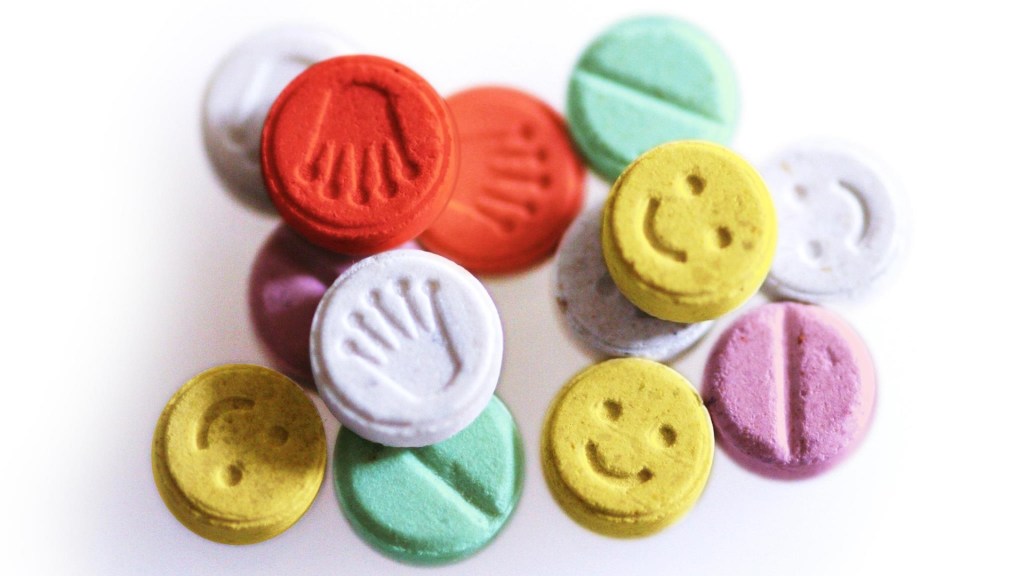More Aussies are dabbling in MDMA on the reg, and the pingas they’re popping are more potent than ever, a new study has found.
Research from the University Of New South Wales has mapped the way that Australia’s ecstasy habit has changed since 2003, with the current trend showing that drug use is on the up, and that 60 per cent of young Aussies are preferring to trip on a high-purity crystal version of MDMA.
“Participants in our survey, the longest running in Australia, first mentioned use of crystal ecstasy in 2012. Since then we have seen a steady year-on-year increase in the reported use of crystal ecstasy,” says senior researcher Amanda Roxburgh.
“While pills are still the most common form reportedly used, the increasing popularity of ecstasy crystals appears to be linked to their increased purity.”
Not only that, it seems that a “significant portion” of Australian #MDM8s are also binging on the max-potency version of the drug for benders of around 48-hours.
“The majority of ecstasy users do not use frequently, however a significant minority are using weekly or more,” Roxburgh says. “In addition, 40 per cent of users say they have ‘binged’ on stimulants. We define bingeing as using it for more than two days without sleep.”
While studies are still being conducted by UNSW’s National Drug and Alcohol Research Centre, experts reckon that bingeing coupled with the high purity of modern MDMA increases the overall risk factor.
To boot, studies have also deduced that your mate Molly isn’t hard to come by, with 90 per cent of those surveyed describing ecstasy in any form as “easy or very easy to obtain”, compared with less than 70 per cent finding it easy to obtain five to six years ago.
Basically, the MDMA business is booming. Supply, quality and demand has never been higher. And this is something that obviously poses a number of problems.
“As the crystal form of ecstasy is relatively new we are still gaining information about how users respond to it,” Roxburgh says. “It is reasonable to assume that increased purity, coupled with uncertainty around the amount of the drug being taken, increases risks.”
UNSW’s research backs up the findings of a recent international survey that concluded MDMA is getting purer and more dangerous on a global scale.
It also comes at a time when ecstasy-related hospital admissions have doubled in NSW, and there’ve been a bunch of drug-related deaths at Australian music festivals over the past year, and countless near-fatal overdoses.
But in the face of mounting calls from leading politicians, doctors, public health and drug experts, criminologists, lawyers, policy writers, researchers and police for a major paradigm shift in the way that Australia thinks about and tackles drug use, the NSW Government in particular remains steadfastly committed to its war on drugs and drug users, with Premier Mike Baird offering the alternative solution of “just don’t take the pills and you’ll be fine!” to combat the state’s growing ecstasy epidemic.
However, it seems the push for a ‘harm minimisation’ approach to drug use, which shifts the focus on preventing overdoses rather than punishing offenders, is gaining support, with a motion to remove sniffer dogs and introduce pill testing facilities at Australian music festivals recently passing the Senate.










